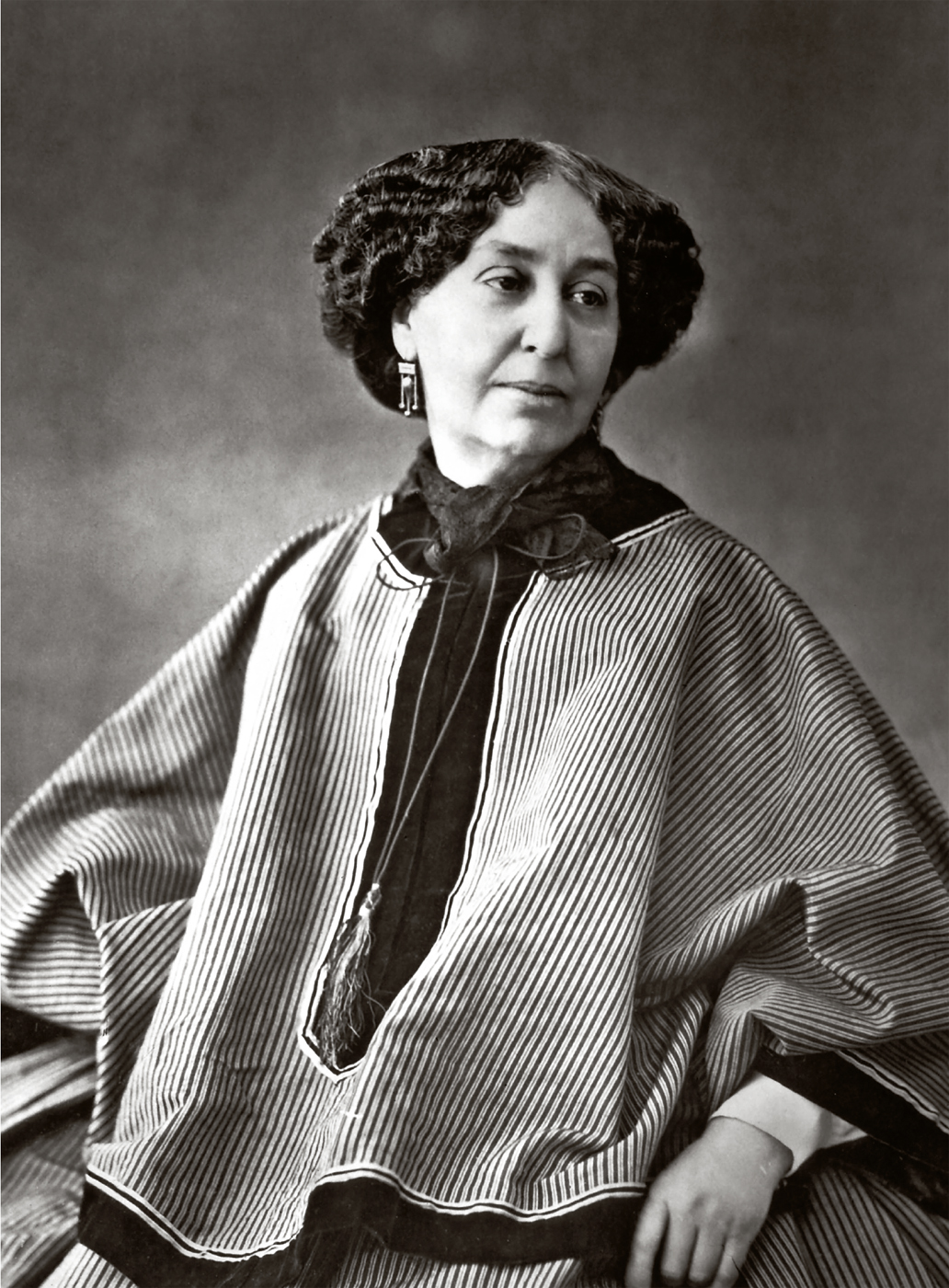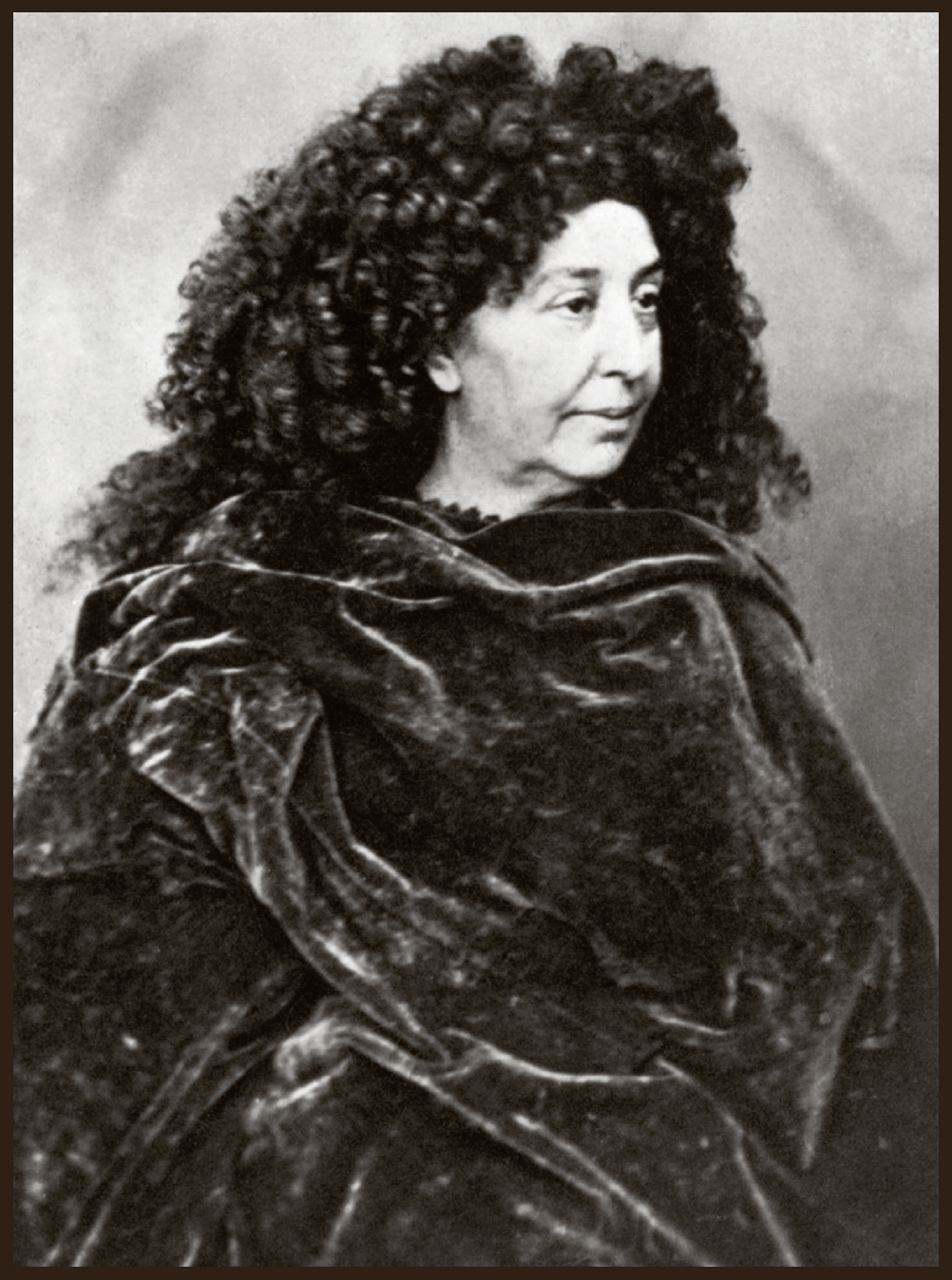Which of us has not some sorrow to dull, or some yoke to cast off?
—George Sand, Winter in Majorca, 1855
Born Amantine-Lucile-Aurore Dupin in Paris in 1804, George Sand lived her life in what was then a way most scandalous to her contemporaries. She earned her own living as an author, and she divorced her husband and fell in love with men and women. Sand lived independently and came and went around Paris and other parts of France as she pleased—quite often dressed as a man if she felt like it, and very often smoking a cigar. She is the epitome of feminism for many women today. She questioned society and rejected its sexual categories. She succeeded in life in a world where only men were expected to have careers and ambition and to achieve what they wanted. Sand decided she would have it all, too.
For a woman so wild, Sand was also a true voice of romanticism: she was an individual who sought to express her passion and energies through the art of her words, and she intensely loved the emotions evoked by nature. She adored the simple elegance of the countryside. In the introduction to her 1846 book, The Devil’s Pool (La Mare au diable), she wrote her philosophy of life: “Look at what is simple, my kind reader; look at the sky, the fields, the trees, and at what is good and true in the peasants; you will catch a glimpse of them in my book but you will see them much better in nature.” She intended to “write a very touching and very simple story.”

Getty Images: Galella, Ron/Getty Images/Handout
George Sand, 1864.

Alamy Stock Photo: Photo Researchers Inc
George Sand draped in velvet, mid-1880s.
Her two other significant pastoral novels, Fanchon, the Cricket (La petite Fadette, 1849) and The Master Pipers (Les Maîtres sonneurs, 1852), reflect the idyllic childhood she experienced at her grandmother’s estate in Nohant, in the Berry region. She moved there after her father died in a horseback-riding accident when she was four years old. When she was eighteen her grandmother died, and she inherited five hundred thousand francs and the house. She was placed under the guardianship of a distant uncle and, in order to have control over her money, hastily entered into marriage with the illegitimate son of a French baron, François Casimir Dudevant, in 1822.
Sand thought that Victor Hugo’s 1862 book, Les Misérables, contained too much Christianity.
Sand’s father, Maurice Dupin, was related to a former king of Poland; her mother, Sophie Delaborde, was the daughter of a bird keeper and breeder.
She started wearing boys’ clothes to go shooting when she was young. It was a habit she became notorious for in later life, although when she was twenty-three and beginning to explore her own writing style, she began a journal she called Voyage en Auvergne reminiscing about her holidays in Auvergne. She described herself as a sixteen-year-old in typical bucolic fashion: “I was fresh looking, though dark. I was like those wild flowers which grow without any art or culture but with gay, lively coloring.”
Vanity is the most despotic and iniquitous of masters, and I can never be the slave of my own vices.
—George Sand, Jealousy: Teverino, 1845
In Sand’s autobiography, Story of My Life (Histoire de ma vie), she reflects on the eccentric clothing choices that she made her signature style—the practicality of her approach was modern and far beyond the norms of how an aristocratic young woman was expected to behave and attire herself in the early nineteenth century. Floppy white shirts, waistcoats, and tailored suits tread the catwalk today in women’s wear, but back in the 1830s Sand broke ground and convention by her appropriation of menswear. She describes the practicalities in Story of My Life: “Fashion helped me in my disguise, for men were wearing long, square frock-coats styled à la propriétaire. They came down to the heels, and fitted the figure so little that my brother, when putting his on, said to me one day at Nohant: ‘It is a nice cut, isn’t it? The tailor takes his measures from a sentry-box, and the coat then fits a whole regiment.’ I had ‘a sentry-box coat’ made, of rough grey cloth, with trousers and waistcoat to match. With a grey hat and a huge cravat of woollen material, I looked exactly like a first-year student.” However, George was never pigeonholed by her wardrobe—she was fluidly adept at sartorial quirks and, ever the radical, would quite often on a whim wear pearls and gowns to the opera if she felt like it.
Little Marie still wore that head-dress, and her forehead was so white and so pure that it defied the white of the linen to cast a shadow upon it. Although she had not closed her eyes during the night, the morning air, and above all things the inward joy of a soul as spotless as the sky, and a little hidden fire, held in check by the modesty of youth, sent to her cheeks a flush as delicate as the peach-blossom in the early days of April.
—George Sand, The Devil’s Pool, 1846

Language is a prostitute queen who descends and rises to all roles. Disguises herself, arrays herself in fine apparel, hides her head and effaces herself.
—George Sand, Indiana, 1832